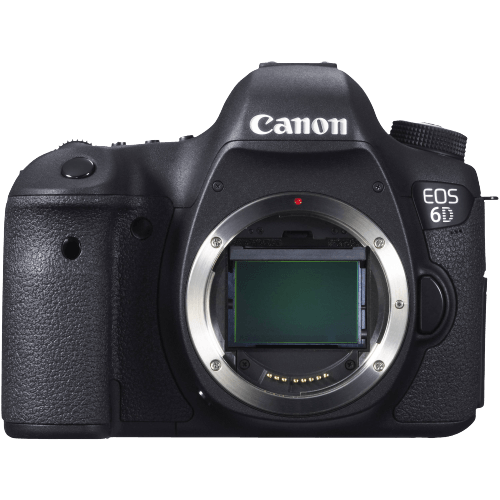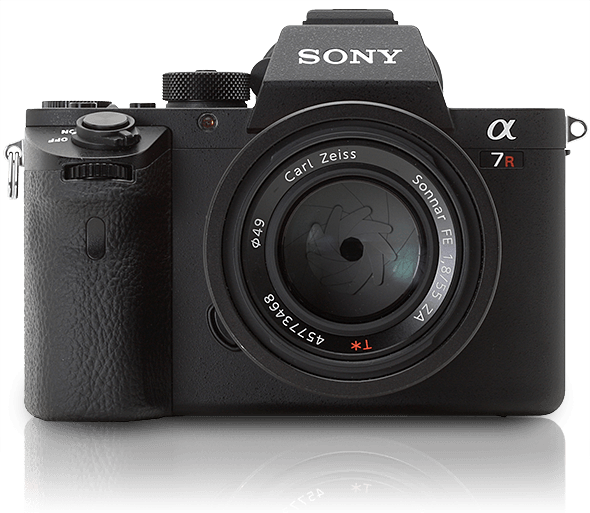Canon EOS 6D vs Sony a7R II Comparison
Canon EOS 6D

Sony a7R II

The Sony a7R II outperforms the Canon EOS 6D with a score of 70/100 compared to 59/100. Both cameras share a few similarities, such as their announcement and release years (2012 for the Canon and 2015 for the Sony) and their respective launch prices ($2099 for the Canon and $3198 for the Sony).
The Sony a7R II’s higher score is due to its mirrorless design, which results in a smaller and lighter body (127 x 96 x 60mm and 625g) compared to the Canon EOS 6D’s DSLR build (145 x 111 x 71mm and 770g). However, the Canon EOS 6D has a lower launch price, making it a more affordable option.
Considering these points, the Sony a7R II stands out as a better camera with its compact and lightweight design, while the Canon EOS 6D remains a budget-friendly choice for those seeking a DSLR.
Canon EOS 6D vs Sony a7R II Overview and Optics
The Sony a7R II outperforms the Canon EOS 6D in optics, scoring 81/100 compared to the Canon’s 61/100. Both cameras share some common specifications, such as a full-frame CMOS sensor and a similar lens mount system (Canon EF for the 6D and Sony FE for the a7R II).
The Sony a7R II excels with its higher megapixel count (42.4 vs. 20.2), faster shooting speed (5 fps vs. 4.5 fps), and superior DXOMARK sensor score (98 vs. 82). Additionally, the a7R II features image stabilization, which the Canon 6D lacks. These factors contribute to the Sony a7R II’s higher score and better overall performance in optics.
However, the Canon EOS 6D does have some advantages, such as its Digic 5+ processor, which provides reliable image processing. Nevertheless, the Sony a7R II’s Bionz X processor is also highly capable, and the camera’s other superior features overshadow this aspect.
Taking all factors into account, the Sony a7R II clearly surpasses the Canon EOS 6D in optics quality. The higher score of 81/100 is due to its superior specifications, such as the higher megapixel count, faster shooting speed, better DXOMARK sensor score, and the presence of image stabilization. While the Canon 6D has a reliable processor, it does not compensate for its shortcomings in other areas. Therefore, the Sony a7R II stands out as the better option for those prioritizing optics performance.
Canon EOS 6D vs Sony a7R II Video Performance
The Sony a7R II outperforms the Canon EOS 6D in video capabilities, scoring 56/100 compared to the Canon’s 43/100. Both cameras share some common features, such as a maximum video frame rate of 30fps and the lack of built-in time-lapse functionality. However, the Sony a7R II boasts superior specs, making it the winner in this comparison.
The main advantage of the Sony a7R II is its 4K video resolution, which is significantly higher than the Canon EOS 6D’s Full HD resolution. With a maximum video dimension of 3840 x 2160, the Sony a7R II captures more detail and provides sharper image quality, making it a better choice for professional videographers and enthusiasts alike.
The Canon EOS 6D, on the other hand, only offers a maximum video resolution of Full HD or 1920 x 1080. Although this resolution is suitable for casual video recording or sharing on social media platforms, it falls short when compared to the Sony a7R II’s 4K capabilities. The Canon EOS 6D’s lower video score reflects this limitation.
Despite the lower score, the Canon EOS 6D may still be a viable option for those seeking a more affordable camera or for those who do not require 4K video resolution. However, for users prioritizing video capabilities, the Sony a7R II is the clear winner in this comparison due to its superior video resolution and overall performance.
Canon EOS 6D vs Sony a7R II Features and Benefits
The Canon EOS 6D and the Sony a7R II both have a feature score of 57 out of 100. Despite having the same score, each camera has its strengths and weaknesses in various aspects of their specifications.
Both cameras share certain features, such as a 3-inch screen size, WiFi capabilities, and a lack of Bluetooth. Neither camera has a touchscreen. These common features contribute to their equal scores.
The Sony a7R II surpasses the Canon EOS 6D in screen resolution, with 1,228,800 dots compared to the 6D’s 1,040,000 dots. This higher resolution provides better image quality and detail when reviewing photos on the camera. Additionally, the a7R II has a flip screen, which offers more flexibility and ease when shooting at different angles.
On the other hand, the Canon EOS 6D has GPS functionality, which the Sony a7R II lacks. This feature allows users to geotag their photos, making it easier to organize and locate images based on their location. This can be particularly useful for travel photographers or those who want to keep track of where their photos were taken.
Taking these differences into account, the Sony a7R II offers advantages in screen resolution and flexibility with its flip screen, while the Canon EOS 6D provides the added benefit of GPS functionality. Each camera’s strengths cater to different user preferences and needs, making it essential for potential buyers to consider which features are most important to them before making a decision.
Canon EOS 6D vs Sony a7R II Storage and Battery
The Canon EOS 6D outperforms the Sony a7R II in storage and battery with a score of 45/100 compared to Sony’s 16/100. Both cameras have one memory card slot and accept SD, SDHC, and SDXC cards. Additionally, the a7R II also supports Memory Stick Duo, Pro Duo, and Pro-HG Duo cards.
The Canon EOS 6D offers significantly better battery life with 1090 shots, while the Sony a7R II only provides 290 shots. The 6D uses the LP-E6 battery type, and the a7R II uses the NP-FW50 battery type. Neither camera supports USB charging.
Although the Sony a7R II has more memory card compatibility, the Canon EOS 6D’s superior battery life makes it a more reliable and efficient choice in terms of storage and battery.
Canon EOS 6D vs Sony a7R II – Our Verdict
Are you still undecided about which camera is right for you? Have a look at these popular comparisons that feature the Canon EOS 6D or the Sony a7R II:

